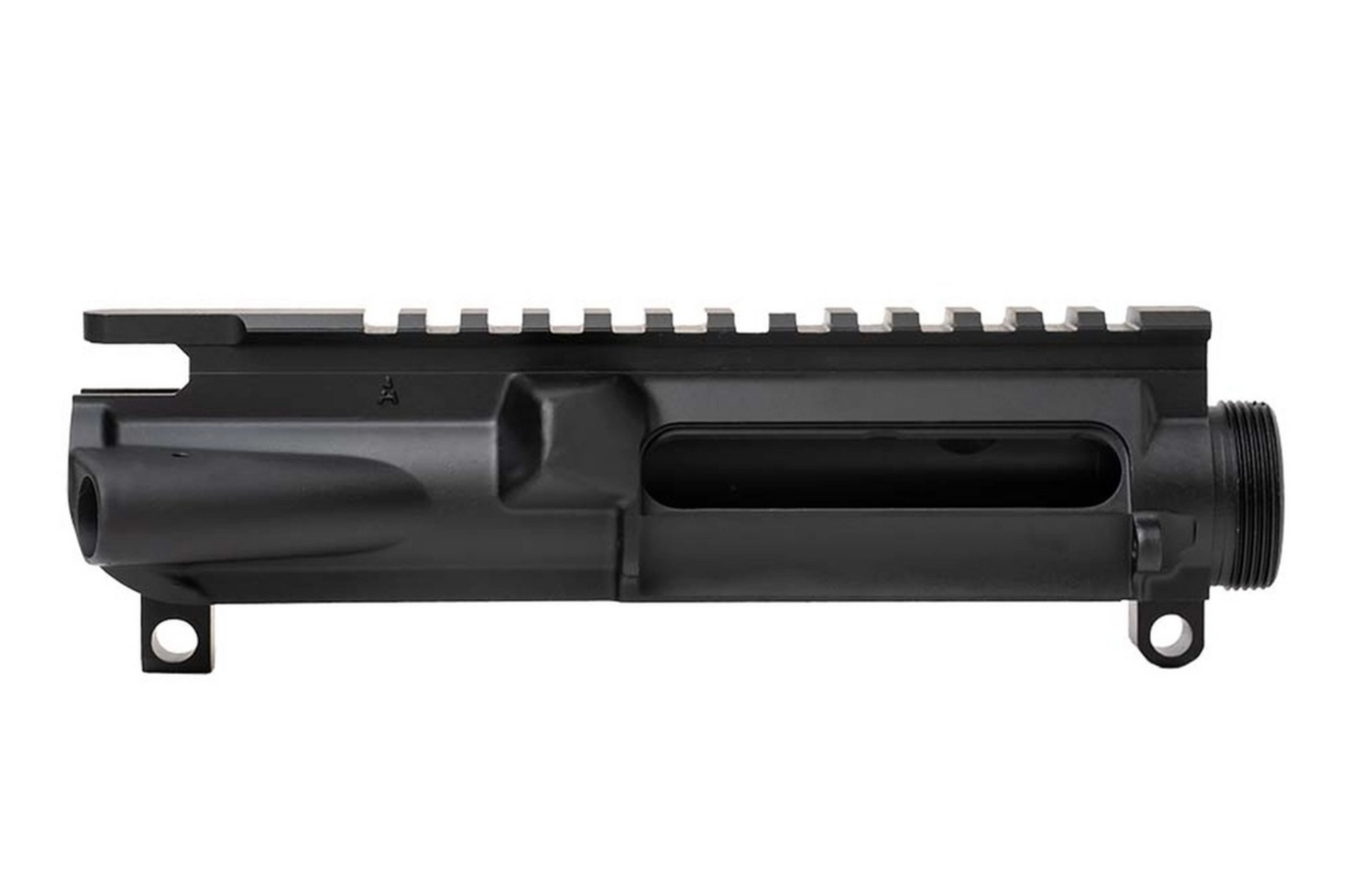Making Sense of Bolt Carrier Group Coatings and Stripped Upper Receivers
Stripped upper receivers are the bare-bones option for completing a home build. They lack the other parts that typically come bundled with complete upper assemblies, like barrels, handguards, muzzle devices, and bolt carrier groups.
Speaking of which, there are many different types of modern coatings for bolt carrier groups that you can add to a stripped upper receiver for superior performance, better permanent dry lubricity, and improved cycling. Let’s take a look at a few of them.
Phosphate
Phosphate-coated bolt carrier groups are every man’s coating. They’re affordable to produce, standard and considered mil-spec, so they’re also pretty common.
Phosphate coatings have a little bit of a toothier finish than other BCG coatings because often the phosphate coating is applied right over the chrome of the group. This means two things: one, it eliminates the “shine” of the BCG, helping with concealment in bright sunlight, and two, it means the BCG can carry an oil coating more effectively than slicker groups.
However, despite these advantages and the fact that they’re fairly affordable, phosphate-coated BCGs can be a little more difficult to clean and require a more liquid lubricant to cycle smoothly.
Black Nitride
Black nitride coatings are applied via a heat treatment that causes nitrogen to diffuse onto the surface of the bolt carrier group. This creates an exceptionally hard and smooth finish that is resistant to damage, corrosion, and chemicals.
Black nitride coatings are fairly economical by comparison to some other coatings and also exhibit excellent permanent dry lubricity. Permanent dry lubricity lessens the need for liquid lubricants that, though they cut back on friction, also trap dirt and fouling and can ultimately increase abrasion and wear.
Because of this permanent dry lubricity, black nitride BCGs are relatively easy to clean and can often just be wiped down.
Hard Chrome
Hard chrome coatings are the original BCG coating. The first AR-15 rifles, designed by Eugene Stoner, had hard chrome-coated BCGs.
Hard chrome-coated BCGs are naturally hard and, since chrome is chemically resistant, are corrosion-resistant as well. They also exhibit decent dry lubricity.
However, they are fairly expensive to produce and also tend to be shiny, which has made darker and more discrete options like black nitride and phosphate coatings more popular. Still, if you can afford it and don’t care about the luster, hard chrome BCGs are quality.
Titanium Nitride
Titanium nitride, sometimes referred to as TiN, is another form of nitride coating. It is a ceramic coating that is applied to bolt carrier groups; like other ceramic coatings (such as Cerakote) it is extremely thin, extremely hard, and very slick.
Titanium nitride coated bolt carrier groups, like black nitride bolt carrier groups have a very hard finish that delivers excellent wear and corrosion resistance. In addition, TiN coated BCGs offer excellent dry lubricity, requiring less liquid lubricant and streamlining cleaning and maintenance.
Nickel Boron
A nickel boron coating is applied to a BCG via a process known as electroless plating. In contrast to electroplating, which uses electrical energy to deposit chemical finishes on a metal substrate (the bolt carrier group), in electroless plating, the nickel boron coating is applied via a chemical reaction.
Nickel boron coatings exhibit some of the best permanent dry lubricity on the market. With a high wear resistance and low coefficient of friction, nickel boron-coated BCGs offer better permanent dry lubricity than both hard chrome and nitride coatings while offering equable corrosion resistance.
They’re often available in bright silver and gold finishes, and since they are extremely hard and slick, they offer great wear resistance and are fairly easy to clean and maintain. That said, it comes at a price - nickel boron coatings are typically more expensive than hard chrome or nitride coatings.
Why It Matters
Bolt carrier groups with special coatings may be more expensive than run-of-the-mill mil-spec phosphate BCGs, but they offer excellent wear and corrosion resistance and some shooters find them easier to maintain.
In addition, a BCG with a special coating that exhibits higher dry lubricity may improve cycling time and last through more rounds than a bolt carrier group that experiences greater wear during the course of a normal session.
What Else You’ll Need with a Stripped Upper Receiver
If you’re thinking about creating a home build using a stripped upper receiver, in addition to the stripped upper itself (we have both billet upper receivers and forged uppers [mil-spec uppers]) you’ll need a barrel, a handguard, a charging handle, a forward assist and ejection port cover, and a gas block and tube. You’ll also need an 80% lower receiver and a lower parts kit to complete the assembly, as well as an 80% lower jig to complete the milling of the receiver blank if you’re doing it from scratch.
Contact Us!
Whether you’re looking for a complete upper receiver assembly or just a bolt carrier group to make a routine replacement, we have all the AR-15 parts you need. Just get in touch with us at 508-834-4223 or at Sales@5DTactical.com if you need any assistance!






